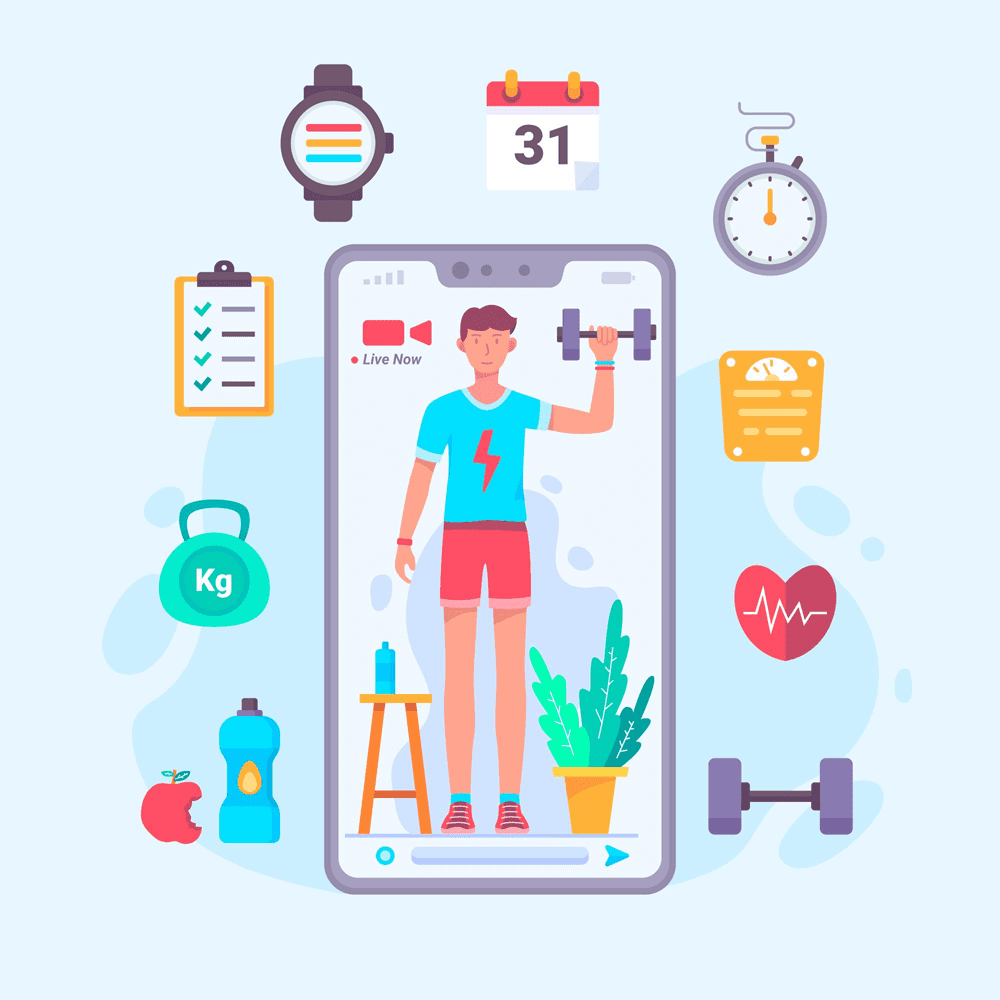Daily fitness routine for beginners
Starting a fitness routine can feel intimidating—especially if you’re new, out of shape, or unsure where to begin.
The good news? You don’t need a gym membership or fancy equipment to take control of your fitness.
This daily fitness routine for beginners guide will help you build a simple, effective routine you can start at home.
Whether your goal is to lose weight, gain strength, or just feel better, consistency and smart planning are key. According to the CDC, physical activity reduces the risk of chronic disease.
Set Your Fitness Goals
Before jumping into workouts, it’s important to know what you want to achieve.
Are you aiming for weight loss, improved endurance, or more strength?
Use the SMART goal method: Specific, Measurable, Achievable, Relevant, and Time-bound.
For example: “I want to walk 30 minutes a day, 5 times a week, for the next month.”
Having clear goals keeps you motivated and on track.
Understand the Basics
There are three main components of fitness:
- Cardio boosts heart health and burns calories (e.g., walking, cycling, jumping jacks)
- Strength training builds muscle and metabolism (e.g., bodyweight exercises)
- Flexibility helps with recovery and injury prevention (e.g., stretching, yoga)
A well-rounded routine includes all three—even in small doses.
Create a Simple Weekly Plan
You don’t need to work out every day to see progress. Here’s a beginner-friendly weekly schedule:
- Monday: 20–30 mins walking or light cardio
- Tuesday: Bodyweight strength training
- Wednesday: Rest or light stretching
- Thursday: Cardio or home workout video
- Friday: Strength training + core
- Saturday: Outdoor walk or yoga
- Sunday: Full rest
Always listen to your body and rest as needed.
Bodyweight Exercises to Start With
Start with basic moves that target multiple muscle groups. Here are beginner-friendly exercises:
- Squats
- Push-ups (regular or knee-supported)
- Lunges
- Planks
- Glute bridges
Perform 2–3 rounds of 10–15 reps per move. As you get stronger, increase reps or rounds.

Track Your Progress
Keeping track of your workouts helps build accountability. Use a notebook, habit tracker, or fitness app.
Record what you did, how you felt, and any improvements. This will show your progress and boost motivation—especially on tough days.
Nutrition & Hydration Tips for Beginners
Exercise and nutrition go hand-in-hand. To fuel your workouts and support recovery:
- Eat whole foods: lean proteins, fruits, vegetables, healthy fats, and complex carbs
- Stay hydrated: aim for at least 6–8 glasses of water daily
- Don’t skip meals—your body needs energy to move and rebuild muscle
For more simple and sustainable eating advice, check out our guide on the Top 10 Nutritional Tips for a Healthier You.
Common Mistakes to Avoid
Beginners often make these mistakes:
- Doing too much too soon
- Skipping warm-ups and cooldowns
- Ignoring form in favor of speed
- Not resting enough
- Comparing progress to others
Take your time, focus on technique, and stay patient with your journey.
Stay Motivated
Motivation can fluctuate, but habits keep you going. Here are a few tips:
- Schedule workouts like appointments
- Track progress and celebrate small wins
- Use playlists, podcasts, or videos to keep things fun
- Partner with a friend or join a supportive online group
Conclusion & Next Steps
You don’t need to be perfect to get results—you just need to get started.
Start with short, simple workouts, focus on form, and build momentum over time.
Your body will adapt, your confidence will grow, and soon, fitness will feel like a natural part of your life.




Pingback: Fat Loss Diet and Exercise Program: A Complete Beginner’s Guide - FitroFuel
Pingback: Nutrition for Strength Training: Eat to Build Strength and Muscle - FitroFuel
Pingback: Motivation Fitness Tips: How to Stay Inspired and Crush Your Goals - FitroFuel